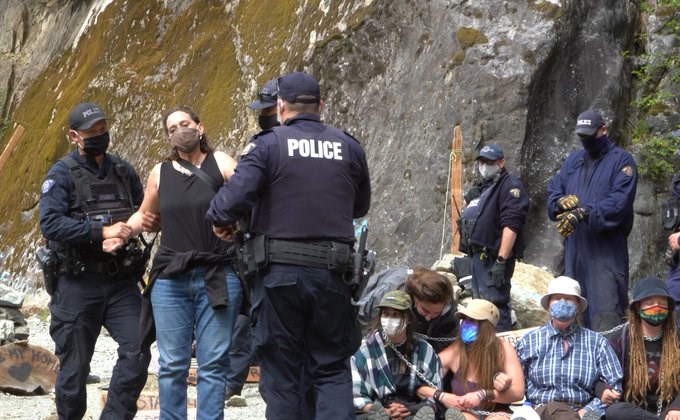I feel like I have stepped back in time reading headlines this week about the arrest of Tzeporah Berman, program director with Stand.Earth, global chair of the Fossil Fuel Non-Proliferation Treaty Initiative, and an adjunct professor, on the frontlines of a logging protest at Fairy Creek on Vancouver Island.
“There are moments in history where citizens are required to stand up because governments are failing to protect the public good. This is one of those moments,” wrote Berman in a Globe and Mail opinion piece published May 21.
I suspect that there are members of our community that would be over there with the protesters except for the travel restrictions due to COVID-19. (Although, what could be more essential than protecting the very forests that are themselves essential to helping fight climate change and maintain biodiversity?)
Almost 30 years ago, Berman was the blockade coordinator in Clayoquot Sound where she was arrested and charged with 857 criminal charges—and her willingness to stand up for the forests there changed how the world saw the logging industry in B.C. and Canada.
It is heartbreaking to know that here we are, more than a quarter of a century later, and people still need to blockade forests to protect them.
I don’t think I am alone as I say that I demand as a resident of B.C., a voter, and a citizen of the Earth that the NDP government stop the logging of old-growth trees now—not later. I also demand that our local community forest managers and the Resort Municipality of Whistler stand up for our local old growth.
And lest you think that we have no power to stand against the forestry industry and the province look both south and north of us.
In March the Squamish Nation, after years of research and policy work, have gained protection for a 70.9-hectare cut block at Dakota Bowl. Archaeologists found evidence that dozens of old-growth trees had been used by the Squamish First Nation there dating back hundreds of years. Indeed the high-elevation yellow cedar forests have been described as a living museum.
“The vast majority of old growth in my territory has been logged already—there’s very, very little left,” said Squamish Nation councillor Khelsilem (Dustin Rivers).
“We need time to talk. You know, we can’t be logging and talking at the same time.”
North of us, the Xáxli’p Community Forest in Lillooet has never sold a log, practicing eco-cultural restoration.
“Do they have an allowable annual cut? Yes, unfortunately, because that was part of the rules in writing the plan,” said Registered Professional Forester and forest ecologist Herb Hammond at an in-depth forestry webinar co-hosted last month by the Whistler Naturalists and the Association of Whistler Area Residents for the Environment.
“Do they abide by it? No. Are they challenged by the government? Meh, a little bit, but they realize that they have a lot of political and legal cache, and power in that negotiation that they’ve used not only to the benefit of their culture and well-being, but to the well-being of their forest. I think any community forest can do that.”
Our Cheakamus Community Forest’s (CCF) plans only protect between 30 and 55 per cent of the old growth, which in the eyes of many locals, doesn’t go far enough.
Whistler Naturalists co-founder Bob Brett said during the March webinar: “Logging removes old forest from the landscape, and I think for all intents and purposes, we can say forever.
“For our area, it’s about recreation and ecotourism.
“There’s a clear case that standing trees are worth more to our local economy than trees going down the highway to Squamish.”
Beyond their tourism and recreational values, intact old-growth forests also represent the most biologically diverse phase of any forest. Locally, old growth is essential habitat for a number of important native species, including the red-listed northern goshawk, which relies on old forest for successful breeding, nesting and hunting, as well as a variety of tree cavity excavators like the pileated woodpecker, which creates essential habitat for cavity-nesting species like owls, martens, fishers and flying squirrels.
“Please take many scientists’ word for it that thousands of species require old-forest habitat to survive,” Brett added.
Perhaps our “community plan” should follow the Xáxli’p Community Forest more closely?
And as for the provincial level—B.C. Premier Horgan made an election promise to protect old growth, and it’s time he kept his word.





